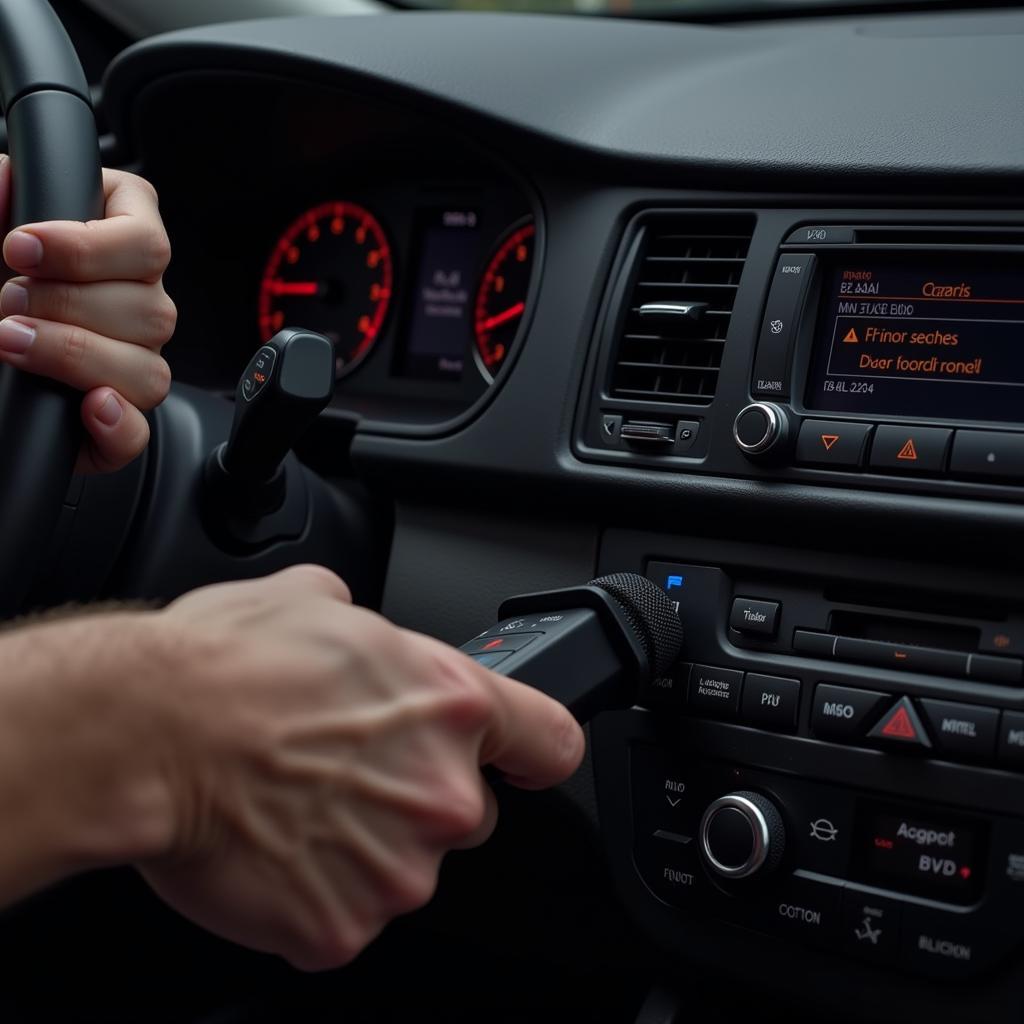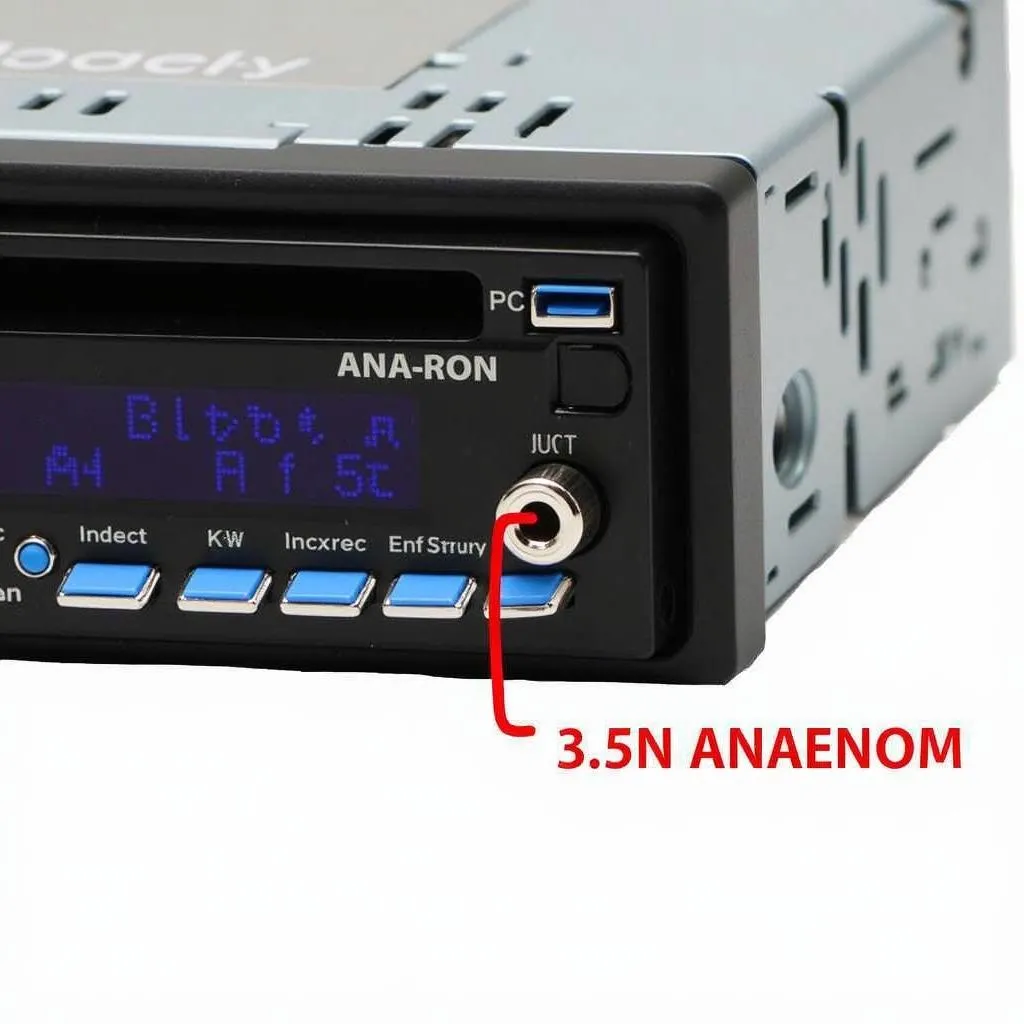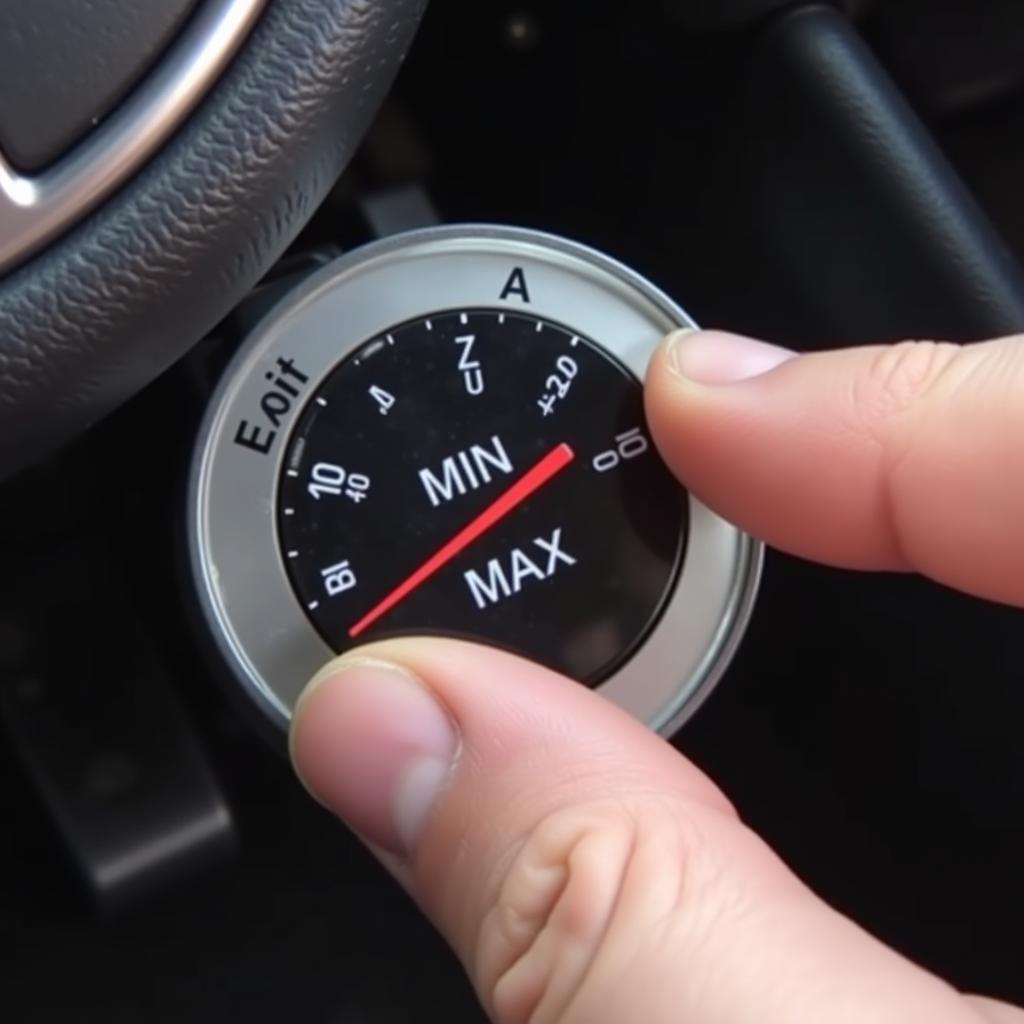The EPC warning light, a dreaded sight for any Seat Arosa owner, can indicate various issues with your car’s electronic systems. Seeing this light illuminate on your dashboard can be concerning, but understanding the potential causes and solutions can help you address the problem efficiently.
This comprehensive guide delves into the intricacies of the EPC warning light in a Seat Arosa, providing valuable insights into its meaning, possible triggers, diagnostic procedures, and recommended solutions.
Understanding the EPC Warning Light
The EPC light, short for Electronic Power Control, signals a malfunction within your Arosa’s engine management system or electronic throttle control. Unlike a check engine light that focuses solely on the engine, the EPC light encompasses a broader range of electronic components, including:
- Throttle body
- Cruise control system
- Traction control system
- Brake light switch
- Mass airflow sensor
- Oxygen sensors
While the EPC warning light itself doesn’t pinpoint the exact issue, it serves as a crucial alert system, prompting you to investigate and address the underlying problem. Ignoring it could lead to reduced engine performance, increased emissions, or even safety hazards.
Common Causes of an EPC Light on Seat Arosa
Identifying the root cause of the EPC warning light requires a systematic approach, often involving diagnostic equipment. However, some common culprits are known to trigger this warning in Seat Arosa vehicles:
-
Faulty Throttle Position Sensor: This sensor relays the position of your accelerator pedal to the engine control unit, regulating fuel and air intake. A malfunctioning sensor can disrupt this process, leading to an illuminated EPC light.
-
Malfunctioning Brake Light Switch: The brake light switch plays a crucial role in both illuminating your brake lights and signaling the engine control unit to disengage cruise control. A faulty switch can disrupt these functions and trigger the EPC warning light.
-
Issues with the Mass Air Flow (MAF) Sensor: The MAF sensor measures the amount of air entering the engine, vital information for the engine control unit to calculate the optimal fuel-air mixture. A dirty or failing MAF sensor can disrupt this process, leading to poor engine performance and an illuminated EPC warning light.
-
Oxygen Sensor Problems: Oxygen sensors, also known as lambda sensors, monitor the oxygen content in the exhaust gases, helping the engine control unit adjust the air-fuel mixture for optimal combustion and reduced emissions. A failing oxygen sensor can disrupt this process and trigger the EPC warning light.
Diagnosing the EPC Warning Light
Diagnosing the EPC warning light accurately requires specialized diagnostic equipment that can read the fault codes stored in your Seat Arosa’s engine control unit. While some may attempt to diagnose the issue themselves, seeking professional help from a qualified mechanic specializing in Seat vehicles is highly recommended.
 Seat Arosa Diagnostics
Seat Arosa Diagnostics
They can accurately interpret the fault codes and perform the necessary tests to pinpoint the underlying cause. This approach ensures an efficient and accurate diagnosis, saving you time and potential misdiagnoses.
Addressing the EPC Warning Light: Solutions and Repairs
Once the root cause of the EPC warning light is identified, the appropriate repair can be carried out. Depending on the diagnosis, solutions may range from simple component replacements to more complex software updates.
-
Sensor Replacement: If a faulty sensor, such as the throttle position sensor, brake light switch, or MAF sensor, is identified as the culprit, replacing the faulty sensor with a new, OEM-quality part is typically the solution.
-
Component Cleaning: In some cases, a thorough cleaning of components like the MAF sensor or throttle body might be sufficient to restore proper functionality and extinguish the EPC warning light.
-
Software Updates: Occasionally, outdated software in the engine control unit or other electronic modules could be the source of the problem. In such cases, updating the software to the latest version can resolve the issue. This procedure often requires specialized equipment and expertise, making it crucial to seek professional assistance.
 Seat Arosa Software Update
Seat Arosa Software Update
- Wiring Harness Inspection: While less common, a damaged or corroded wire in the engine wiring harness can disrupt communication between various electronic components and trigger the EPC light. A thorough inspection of the wiring harness might be necessary to identify and repair any faults.
Preventive Measures: Keeping the EPC Light at Bay
While not all causes of the EPC warning light are preventable, certain measures can be taken to minimize the likelihood of its occurrence:
-
Regular Vehicle Maintenance: Adhering to your Seat Arosa’s recommended maintenance schedule, including timely oil changes, spark plug replacements, and air filter inspections, can contribute to the longevity and optimal performance of your car’s engine and electronic systems.
-
Quality Fuel and Fluids: Using high-quality fuel and ensuring all fluids, such as engine coolant and brake fluid, are at the correct levels and in good condition can prevent issues with the fuel system and other electronic components.
-
Gentle Driving Habits: Avoiding aggressive acceleration and braking can reduce strain on your car’s engine and transmission, contributing to the longevity of these crucial systems.
-
Prompt Attention to Warning Lights: Addressing any illuminated warning lights, including the EPC light, promptly can prevent minor issues from escalating into major problems, saving you time, money, and potential headaches down the road.
Conclusion
The EPC warning light on your Seat Arosa, though a cause for concern, shouldn’t be a reason to panic. Understanding its meaning, potential causes, and solutions can help you approach the issue systematically and confidently. Remember, seeking professional diagnosis and repair from a qualified mechanic specializing in Seat vehicles is always recommended to ensure a safe and reliable driving experience.


